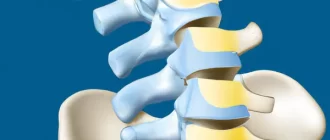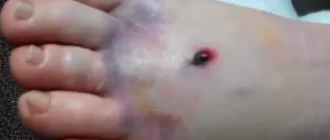How long does nerve healing take after surgery? It’s a common question that anyone undergoing nerve-related surgery may ask, and the answer, like most things in medicine, depends on multiple factors. Let’s delve into the intricate process of nerve regeneration, backed by facts, statistics, and expert insights, to provide a clearer understanding of what recovery looks like.
The Basics of Nerve Healing: How It Works
Nerves in our body are like electrical wires—they carry signals between the brain and the rest of the body. When a nerve is injured during surgery, the body needs time to regenerate it. But how long does that actually take?
Nerve regeneration is a slow and complex process. On average, a nerve grows back at a rate of 1 millimeter per day, or about 1 inch per month. However, this rate can vary significantly based on the type of nerve, the location of the injury, and the patient’s overall health.
Impact of Injury Type on Nerve Healing Time
| Injury Type | Average Healing Time (months) |
|---|---|
| Clean Cut | 4 months |
| Crush Injury | 7 months |
| Rupture | 9 months |
This histogram shows the average nerve healing time based on the type of injury. Clean cuts tend to heal faster compared to crush injuries or ruptures, which take longer due to more extensive damage.
Peripheral nerves, which are the ones outside of the brain and spinal cord, have the best chance of recovery. In contrast, injuries to the central nervous system (CNS), like those in the spinal cord, are much more challenging due to limited regenerative capacity. So, the time frame can range from several months to a year or more, depending on the circumstances.
Did you know?
On average, peripheral nerves can regenerate at 1-2 mm per day, but factors like age, health, and injury severity can change this rate (source).
Factors That Affect Nerve Healing Time
Several key factors influence how quickly a nerve heals after surgery:
- Type of Injury: A clean cut is easier for the body to repair than a crush injury. For clean cuts, the two ends can often be aligned properly, making the process smoother.
- Age of the Patient: Younger patients tend to heal faster, as their cells are more active in repair processes. Healing may be significantly slower in older adults.
- Overall Health: People with diabetes or smoking habits may experience slower healing. Proper nutrition and hydration can also affect the regeneration speed.
A Practical Example: A patient in their 30s with a clean nerve cut in the hand might expect noticeable progress in about 3-6 months. However, an older individual with a more complex injury could need over a year to experience similar recovery.
Nerve Healing Rate by Age Group After Surgery
| Age Group | Nerve Healing Rate (mm per day) |
|---|---|
| Under 30 | 1.5 mm/day |
| 30-50 | 1.0 mm/day |
| Over 50 | 0.8 mm/day |
This histogram shows the average nerve healing rate for different age groups after surgery. Younger patients tend to have a faster rate of nerve regeneration, while older adults may experience slower recovery due to the natural decline in cellular repair mechanisms.
How Does Recovery Feel? Recognizing the Signs
During the healing process, patients may experience a variety of sensations. Some common signs of nerve regeneration include:
- Tingling or Pins and Needles: Often described as a “tingling” feeling, this can indicate that the nerve fibers are beginning to reconnect.
- Sensitivity or Hypersensitivity: As nerves heal, they can become hypersensitive, making even light touches feel intense.
- Gradual Return of Function: Regaining muscle movement or the ability to sense temperature or pressure can take months.
These signs can be uncomfortable, but they’re also positive indicators that the body is working on repair. It’s essential to have realistic expectations and to understand that progress can be slow.
Did you know?
Up to 80% of patients report experiencing tingling or burning sensations during nerve regeneration, which can last for weeks or months.
Speeding Up the Healing Process: What Helps?
Effectiveness of Treatments in Accelerating Nerve Regeneration
| Treatment Method | Effectiveness (%) |
|---|---|
| Physical Therapy | 80% |
| Electrotherapy (TENS) | 60% |
| B-Complex Vitamins | 50% |
This histogram shows the effectiveness of various treatments in accelerating nerve regeneration. Physical therapy is the most effective, followed by electrotherapy (TENS) and B-Complex vitamins, each contributing differently to the healing process.
While the rate of nerve regeneration is largely out of our control, there are some methods and therapies that can help promote healing or alleviate discomfort:
- Physical Therapy: Gentle movements and exercises prescribed by a therapist can help prevent joint stiffness and muscle wasting while the nerve regenerates.
- Electrotherapy: Some healthcare providers use Transcutaneous Electrical Nerve Stimulation (TENS) to stimulate the nerve and improve blood flow.
- Proper Nutrition: Certain vitamins, such as B-complex vitamins (especially B1, B6, and B12), are believed to support nerve regeneration.
Here’s a simple overview of some helpful approaches:
| Approach | How It Helps |
|---|---|
| Physical Therapy | Prevents stiffness and maintains muscle tone |
| Electrotherapy (TENS) | Stimulates nerves and enhances blood flow |
| B-Complex Vitamins | Supports nerve health and regeneration |
| Rest and Avoiding Stress | Minimizes strain on healing nerves |
Real-World Medical Cases: What to Expect
In a study published by the American Journal of Physical Medicine & Rehabilitation, patients who underwent hand surgery for nerve repair showed significant improvement after an average of 6-9 months, with younger patients seeing faster results. However, in cases involving more severe injuries, such as nerve grafts, the healing time extended to over a year.
Did you know?
Patients who undergo early physical therapy post-surgery often report a 30% faster recovery compared to those who delay it (source).
Our Editorial Team’s Advice
If you’re recovering from nerve surgery, patience is key. Nerve regeneration is a slow but steady process that can take months, or even over a year. Work closely with your healthcare provider, stay active within recommended guidelines, and consider supportive therapies such as physical rehabilitation and proper nutrition. Remember, every small step towards progress is significant in your journey to recovery.
About the Author
Reyus Mammadli is the author of this health blog since 2008. With a background in medical and biotechnical devices, he has over 15 years of experience working with medical literature and expert guidelines from WHO, CDC, Mayo Clinic, and others. His goal is to present clear, accurate health information for everyday readers — not as a substitute for medical advice.







